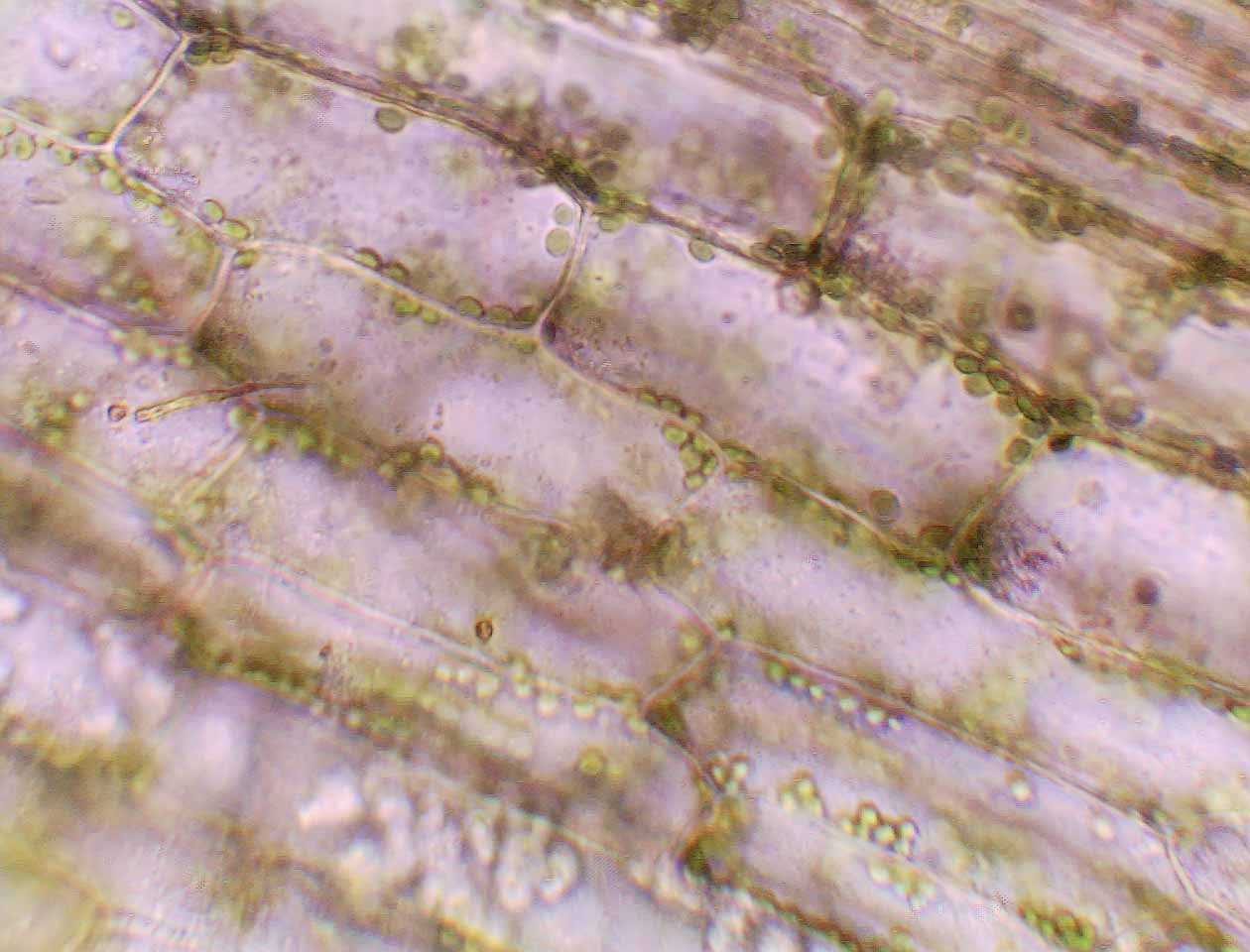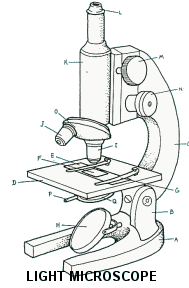I. Basic instruction on use of light microscope
A. History
B. Kinds of microscope
C. Parts of light microscope and their functions
D. Care and use of the microscope
E. Slide preparations - dry mounts, wet mounts
II. Define Cell
III. Cell Theory
IV. Animal Cell
A. Describe basic structure and function
1. cell membrane
2. cell wall
3. nucleus
4. vacuole
5. cytoplasm
V. Plant Cell
A. Review parts of an animal cell
B. Additional structures in plant cells
not in animal cells
1. cell wall
2. chloroplasts
I. Cellular Activities
A. Movement of material - diffusion,
semi-permeable
B. Chemical reactions - osmosis,
photosynthesis
VII. Cellular Organization
A. Unicellular Organisms
B. Multicellular Organisms
1. cell specialization to form
tissues
2. tissues form organs
3. organs form systems
Vlll. Other - Cloning, and
Genetic Engineering
Genetically altered
foods - for a short
Try to learn the parts of the microscope. There is a little quiz for you on the next page. The microscopes we use at school have a light source attached to the base, not mirrors like the one in the diagram. The microscopes we use are called 'Compound Microscopes'. Good Luck!
-is the food safe
-will it harm us in the future
-has there been enough testing
-cloning and stem cell research
-moral and ethical issues
-pros and cons





